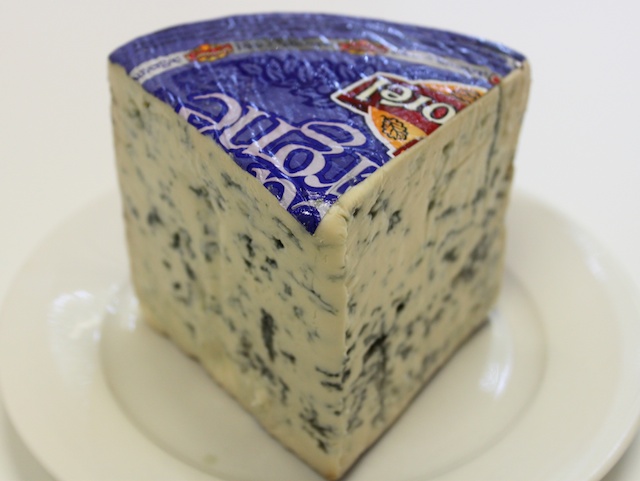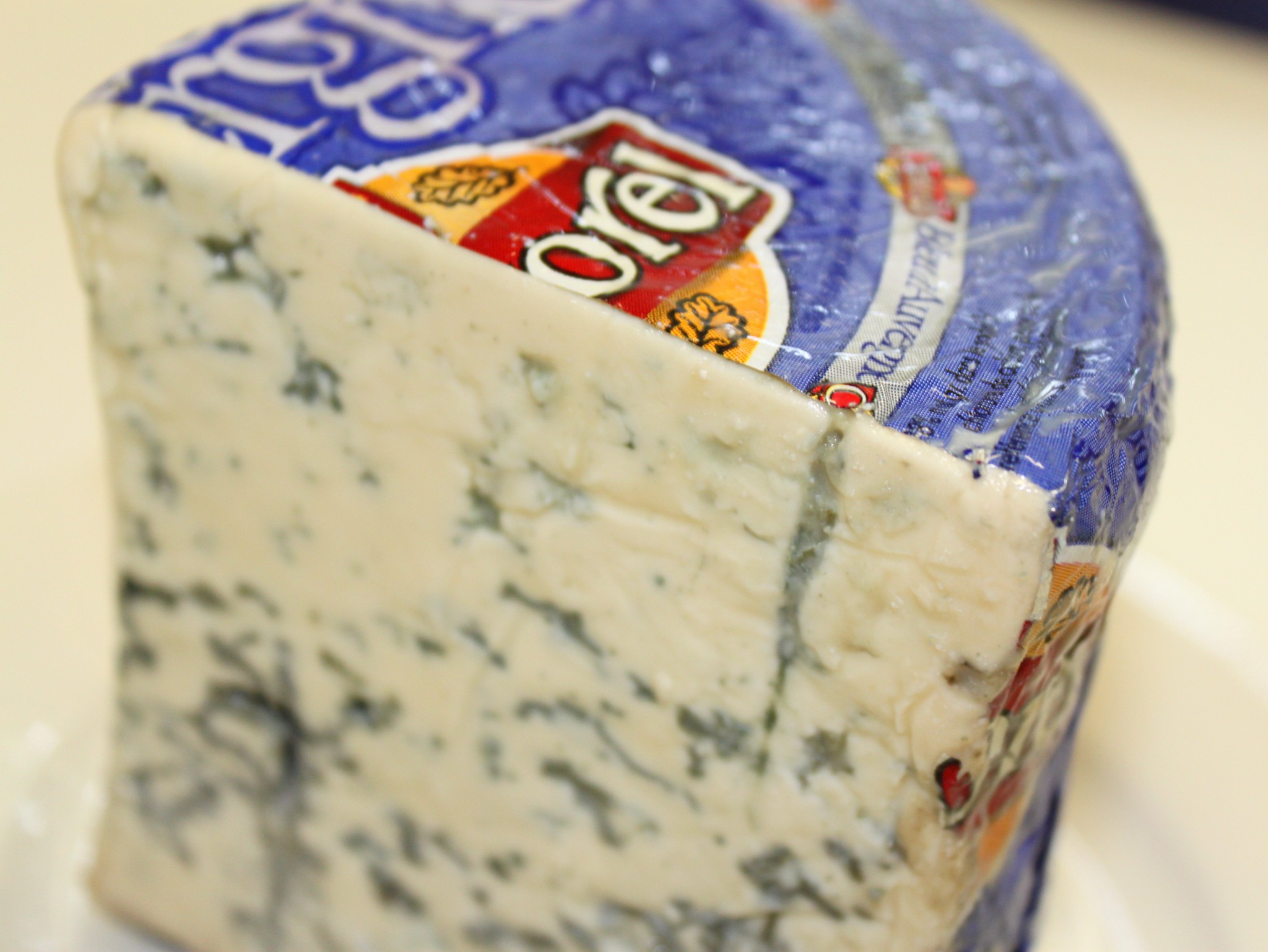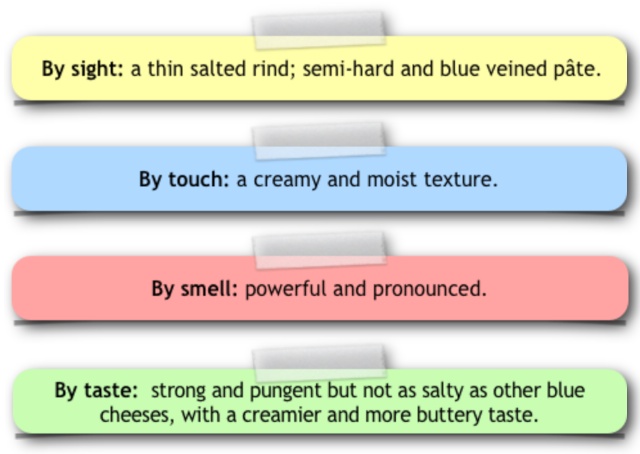Bleu d’Auvergne is a creamy and easy-to-like blue cheese.
Bleu d’Auvergne is a cow’s milk cheese with a thin salted rind and a blue veined pâte. The fat content is at least 50%.
Origins of Bleu d’Auvergne
Bleu d’Auvergne cheese was created in the middle of the 19th century by a young farmer from the Auvergne region. He experimented by injecting blue mould from rye bread into some curd and then found that by pricking the curd with a needle it permitted the air to penetrate better into the cheese and encouraged the growth of the blue mould. After this, all the producers of the region began to use the same techniques and also used the cold, wet caves of Auvergne to mature the cheese.
Bleu d’Auvergne production area

It was named from its region of origin in the Auvergne region of south-central France. Nowadays, this cheese is produced in several départements such as Cantal, Puy-de-Dôme, Haute-Loire, Aveyron, Corrèze, Lot and Lozère.
The production of Bleu d’Auvergne

It is mostly made in dairies and cheese factories (only one farmer). The refrigerated cow’s milk bought and collected is pasteurized and mixed with penicillium. Then, the curd is sliced, drained and slightly brewed. Cheeses are introduced into moulds where they finish their draining. Later, the cheese is slowly and carefully salted. For its development, the blue cheese needs oxygen that is why the Bleu d’Auvergne is drilled with needles to ease aeration. Afterwards, cheeses ripen in fresh and moist cellars for at least 4 weeks in order to get smoothness and taste.
To make a 2.5 kilos Bleu d’Auvergne, it requires 20 to 25 litres of milk.
Selection & tasting of Bleu d’Auvergne
Bleu d’Auverge comes in a cylinder around 20 cm in diameter, 8 to 10cm thick and its weight varies from 2 to 3 kilos.
Bleu d’Auvergne is used for culinary preparations such as canapés, salads, soufflés, and puff pastries. It complements dessert wines such as Sauternes.



